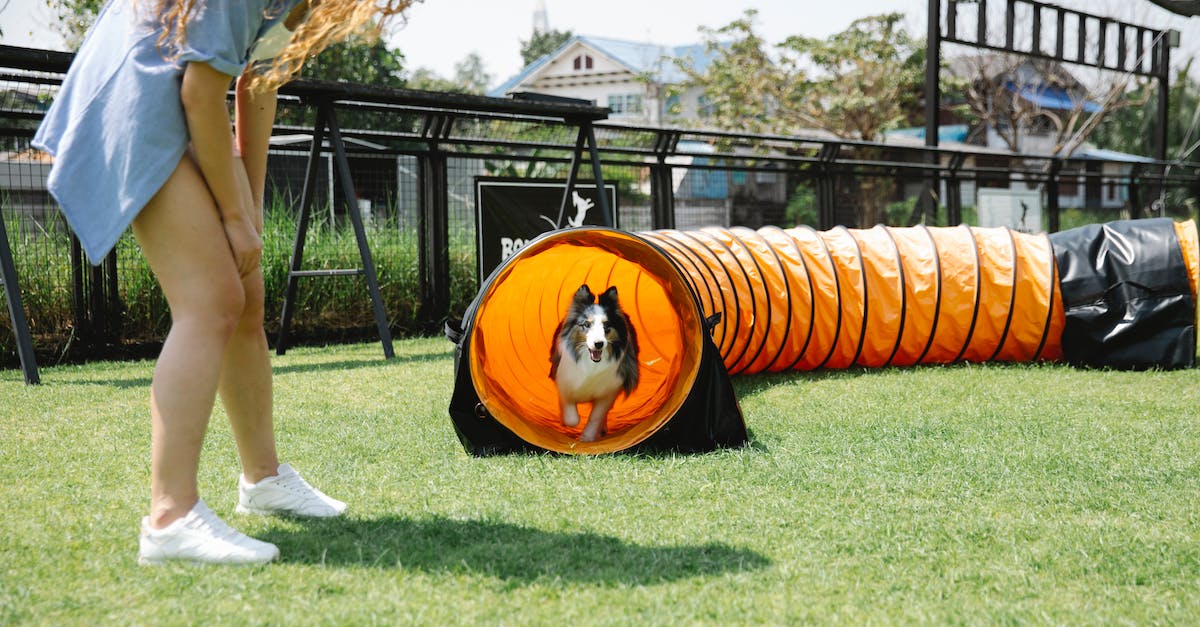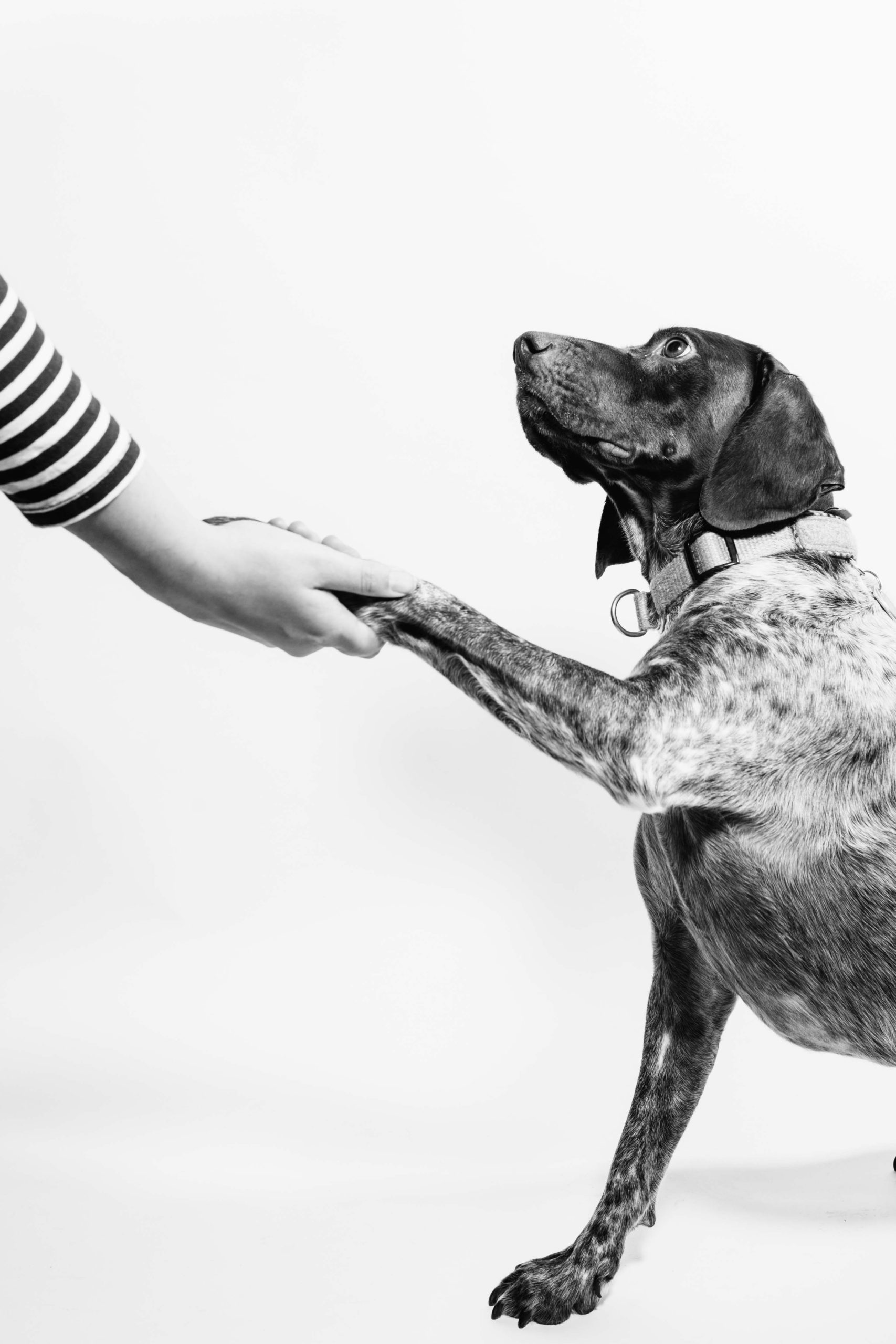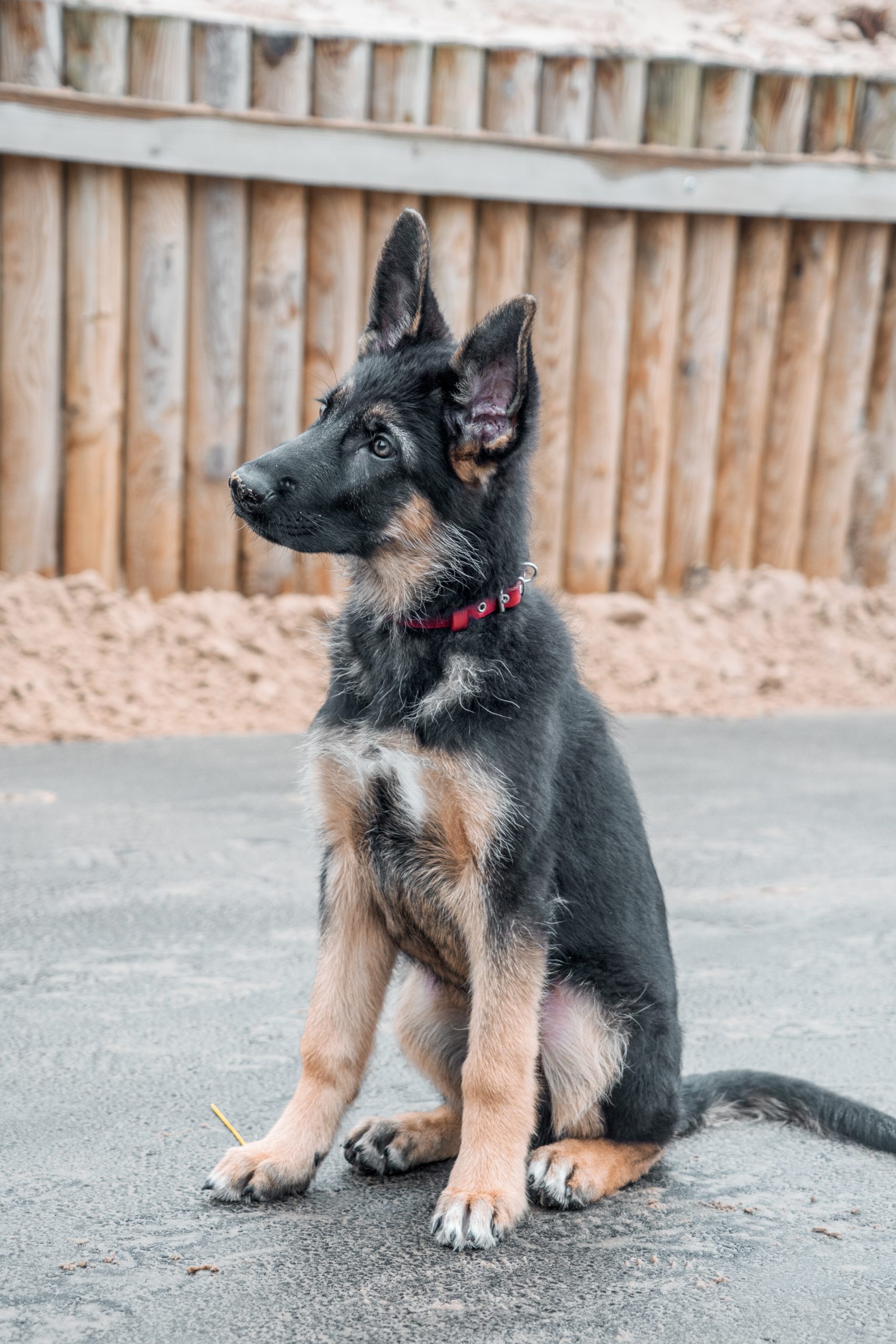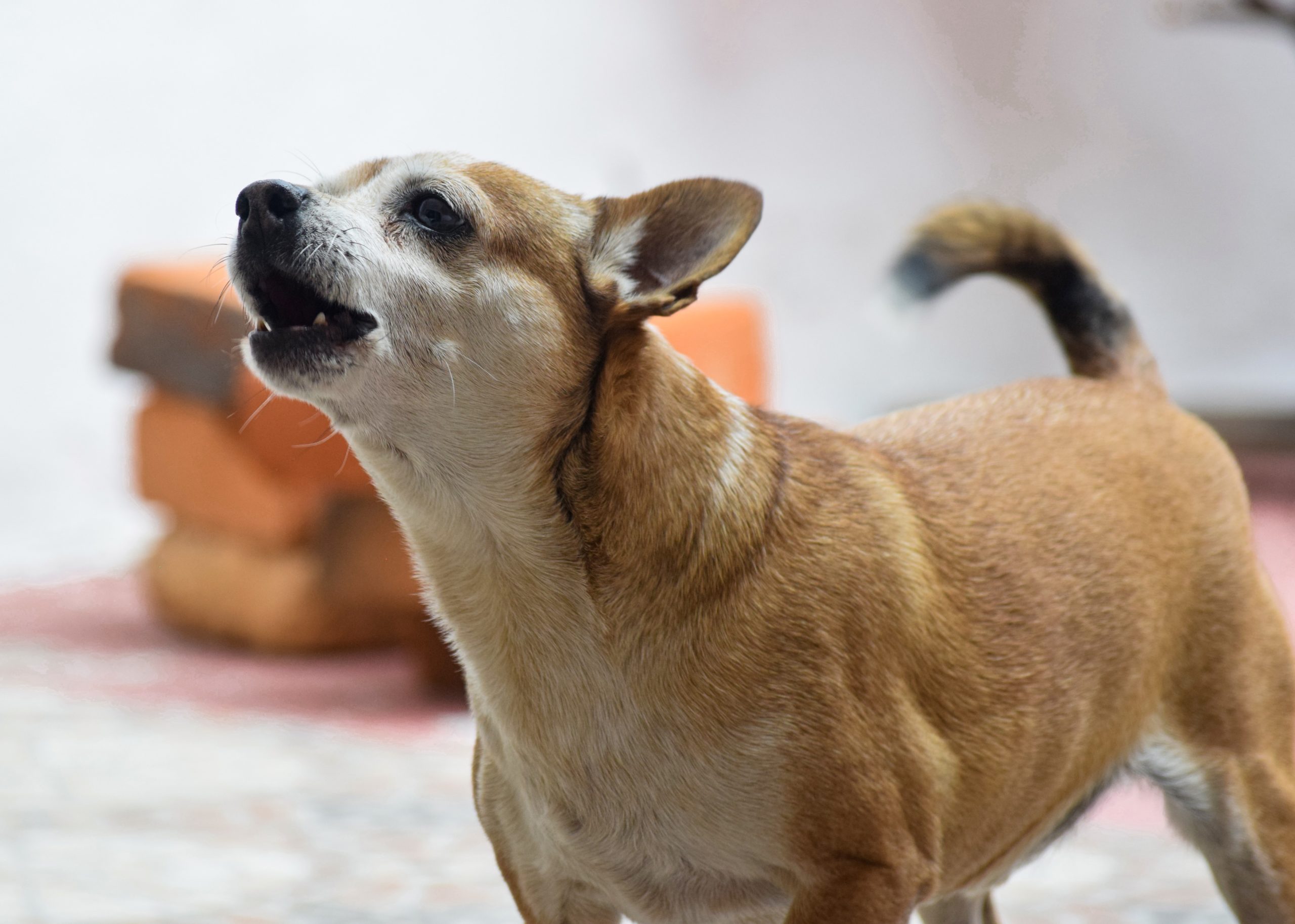Dog training is an essential aspect of responsible pet ownership, and mastering the basics can greatly improve both your life and that of your canine companion.
From understanding dog behavior to teaching essential commands, these fundamentals will set you up for a successful, harmonious relationship with your furry friend.
In this blog post, we will explore key concepts such as positive reinforcement, socialization, and effective techniques for addressing common challenges that arise during the training process.
Understanding Dog Behavior And Training Basics
To train a dog effectively, it’s crucial to have an understanding of canine behavior and training basics, including the importance of socialization, positive reinforcement techniques, consistency in training methods, and the need for patience and persistence.
Importance Of Socialization
One crucial aspect of dog training basics is the importance of socialization for your furry friend. Socializing a puppy or adult dog plays a significant role in developing well-adjusted, confident, and friendly pets that can comfortably interact with humans and other animals in various environments.
For example, you might begin by taking your puppy on short trips to parks or pet-friendly stores while providing them with positive reinforcement through treats or praise whenever they encounter unfamiliar stimuli.
As they become increasingly comfortable navigating the world around them, such interactions will also enrich their lives mentally and emotionally. Experts like Crofton Dog Walkers offer interesting pet facts and training tips on their Fun Facts & Tips page which can be helpful during this process.
Remember that patience is essential during socialization as every dog has its unique temperament; leash training may take time for some dogs when exposing them to new surroundings.
Positive Reinforcement
Using positive reinforcement is one of the most effective ways to train dogs. This technique involves rewarding your pet for displaying good behavior. The reward can be anything from verbal praise and a pat on the head to treats or a favorite toy.
Positive reinforcement training helps build trust between you and your dog, establishes a bond, and makes them feel much happier overall.
According to recent dog behavior studies highlighted by Crofton Dog Walkers Fun Facts & Tips page, positive reinforcement produces better results than punishment-based training methods.
That’s because dogs want nothing more than to please their owners so when they do something right and receive praise; it encourages this behavior in the future.
Consistency In Training
Consistency is key when it comes to training your furry friend. Your dog will respond best when you establish clear rules and expectations, and then stick with them.
From day one, establish the behaviors that are acceptable and which ones are not. Consistently reward positive behaviors, while ignoring unwanted ones. When teaching a new command or trick, use the same verbal cue and hand gesture each time.
Another important aspect of consistency is ensuring that everyone in the household follows the same training methods. For example, if someone lets your pup hop up on furniture while others don’t allow it, this inconsistency can confuse your dog and hinder their progress in training.
Patience And Persistence
Patience and persistence are key when it comes to dog training. It’s important to understand that dogs need time to learn, and every dog learns at a different pace. Some may pick up commands quickly, while others may take longer or require additional reinforcement.
It’s easy for pet owners to become frustrated when their dog doesn’t immediately respond as desired, but losing patience can actually hinder the learning process. Dogs are intuitive animals and can sense when their owner is agitated or upset.
Persistence is equally important because every day presents an opportunity for further learning and growth. Taking a break from regular training will only delay progress, so it’s vital to remain consistent with your approach even on days where you might not see immediate success.
Essential Commands Every Dog Should Learn
Teaching dogs essential commands like sit, stay, and come, are critical for their safety and well-being.
Sit, Stay, And Come
Teaching your dog the fundamental commands of “sit,” “stay,” and “come” will provide a solid foundation for further training. These commands are essential to maintain control while preventing unwanted behaviors such as jumping or aggression.
To teach your dog to sit, start by holding a treat above its nose and moving it backward over its head, which will cause them to lower its rear end into the sitting position.
Remember that effective training requires consistency, patience, and positive reinforcement. Use treats and praise to reward desired behaviors immediately after they occur.
Start practicing these basic commands in a quiet environment without distractions before moving on to more challenging scenarios gradually. Keep sessions short but frequent throughout the day rather than long periods once per week for maximum results.
Down, Heel, And Leave It
Down, heel, and leave it are three of the most essential commands every dog should learn. Down is a command that asks your furry friend to lie down on its stomach from a standing position, while the heel instructs the dog to walk alongside you without pulling or getting distracted.
Dog owners can teach their pets these commands using positive reinforcement techniques such as clicker training and treats. It’s important to start with basic obedience before moving on to more advanced training so that your pooch knows what is expected of them.
Stop And Wait
One essential command every dog should learn is “stop” or “wait.” This command is crucial for keeping your pup safe and preventing them from running into harm’s way. For example, if your dog tries to dart across the road during a walk, you can use the “stop” command to keep them in place until it’s safe to cross.
To teach this command, start by walking with your pup on the leash and abruptly stopping while saying the word “stop” or “wait”. Reward your pup with praise or treats when they come to a stop and wait patiently at your side.
Did you know that nearly 60% of dogs run away because they were not properly trained? Proper training can help prevent heartache and ensure that our furry friends stay safe while out exploring their surroundings.
Common Training Challenges And Techniques
Teaching a dog new behaviors can be challenging, but with patience and persistence, common issues such as barking, jumping up, pulling on the leash, crate training and potty training can be overcome.
Barking
Barking is a natural behavior for dogs, but excessive barking can be problematic and cause disturbances in the neighborhood. The key to stopping unwanted barks is to identify the underlying cause of the behavior.
Dogs may bark out of boredom, fear, anxiety, or even excitement.
One effective way to discourage excessive barking is to teach your dog a “quiet” command. When your dog starts barking excessively, say “quiet” firmly and wait for them to stop before giving them praise and rewards such as treats or toys.
Consistency in using this technique will help reinforce that quiet behavior is desirable while excessive barking is not. Learn more about how to stop excessive barking in our guide.
Jumping Up
Jumping up is a common behavior in dogs that can be problematic, especially when guests come over. It’s usually an indication of excitement or wanting attention.
Many owners try to push their dogs down or yell at them, but this only reinforces the behavior. To curb jumping up, one technique is to teach the “off” command and reward your pup for four paws on the ground.
Another thing you can do is work on impulse control training with your dog by using positive reinforcement techniques such as clicker training when they exhibit calm behaviors like sitting or lying down instead of jumping up.
You may also want to consider rewarding your dog with attention when they have settled down rather than when they first greet you at the door.
Pulling On The Leash
One common challenge during dog walks is when dogs pull on the leash. This can be frustrating for pet owners and dangerous if a large or strong dog lunges forward suddenly.
The key to fixing this problem is consistency in training, using reward-based techniques whenever possible.
It’s also important to use the right equipment, such as a front-clip harness or head collar, that helps discourage pulling without straining your pet’s neck.
Crate Training And Potty Training
Crate training and potty training are essential aspects of dog training. Here are some tips to help you with these:
- Use a crate that’s the right size for your dog. not too small, but not too big. This will make them feel more comfortable and secure.
- Introduce the crate gradually, starting with short periods of time and increasing as they get used to it.
- Don’t use the crate as punishment.– it should be a safe and positive space for your dog.
- Potty training takes time and patience.– be consistent in taking your dog outside frequently. especially after meals or naps.
- Reward your dog when they go potty outside using positive reinforcement such as treats or praise.
- If accidents happen inside, clean it up thoroughly to avoid any lingering smells that could encourage them to go there again.
Remember that every dog is different, so take their individual needs into account when training them. With persistence and consistency, you can successfully crate-train and potty-train your furry friend!
Leash Training
Leash training is an essential part of dog training. It helps keep dogs safe and under control while out for walks and in public places. Here are some important tips to keep in mind when leash-training your dog:
- Begin by teaching your dog to walk on a loose leash in a quiet, distraction-free environment.
- Use positive reinforcement techniques such as treats or praise when your dog walks calmly on the leash.
- Avoid yanking or pulling on the leash as this can cause discomfort and may lead to aggressive behavior.
- Keep the leash short enough for you to maintain control but not too tight that it restricts your dog’s movements unnecessarily.
- Practice walking with your dog on different surfaces such as grass, pavement, or gravel.
- If your dog pulls on the leash, stop walking and wait until they calm down before continuing.
- Use a harness instead of a collar if your dog tends to pull excessively or has respiratory problems.
Remember that patience and persistence are key when it comes to leash training your dog. With consistent practice and positive reinforcement techniques, you can help them become a well-behaved companion both indoors and out!
Advanced Training For Dogs
Advanced training for dogs includes agility, search and rescue, therapy, and service dog training as well as trick training. Explore these options to take your dog’s skills to the next level. You can speed up your training progress by seeking professional help!
Agility Training
Agility training is a fun and challenging way to bond with your dog. It involves teaching them how to navigate through an obstacle course, including jumps, tunnels, weave poles, and more.
The physical and mental stimulation provided by agility training can help keep dogs healthy and happy.
According to important facts about dog training, agility training falls under advanced dog training. This kind of activity helps build stronger muscles for the pet as they run around while jumping over obstacles or running through tunnels that are arranged in patterns or courses predetermined by trainers or owners alike.
Search And Rescue Training
Search and rescue training is a highly specialized program that aims to teach dogs how to locate and identify people who may be lost or trapped. This type of training can be essential in emergency situations, such as natural disasters or accidents.
The first step towards this type of training is obedience training, which establishes the basics of listening and responding to commands.
These exercises include tracking scents, locating objects buried underground, and identifying specific smells associated with human beings. One important aspect of search and rescue training is teaching your dog not to become distracted by other sights or sounds while on the job.
Therapy Dog Training
Therapy dog training is a specialized form of training that aims to create a calm and reliable companion for people in need. Therapy dogs are trained to provide comfort, companionship, and support to people who are struggling with mental or physical health issues.
They visit hospitals, nursing homes, schools, and other places where people may benefit from their calming presence. Training a therapy dog requires patience, consistency, and socialization.
To become a certified therapy dog team with your pet, you must complete an approved training program together. The program’s course work entails handling skills for the owner-handler plus obedience exercises for the dogs followed by supervised visits at various facilities.
After completion of its certification test requirements based on each organization’s guidelines will determine if they pass as eligible for their roles in volunteer service activities.
Service Dog Training
Service dog training is the process of teaching dogs how to serve, support and assist people with disabilities. Service dogs are trained to perform specific tasks like opening doors, alerting their owners of medical issues such as low blood sugar or seizures, retrieving items, and providing emotional support.
This type of training takes time and patience but has a big impact on the quality of life for disabled individuals. It is important to note that not all dogs are cut out for service work, so it’s crucial to choose the right breed and temperament carefully.
According to recent statistics from The Americans with Disabilities Act (ADA), only about 1% of dogs qualify as service dogs in the United States.
Training can take up to two years or more but when done correctly provides incredible results that can genuinely change lives by giving people greater independence than they would have had otherwise.
Such as a person with limited mobility who now has assistance walking without pain or someone who previously lacked security in their daily life now gaining a faithful canine companion by their side at all times.
Trick Training
Trick training can be a fun and rewarding way to bond with your dog. While not necessarily essential for everyday obedience, teaching tricks can help mentally stimulate your pup and provide an opportunity for you both to have some fun together.
Some popular tricks include rolling over, playing dead, and giving high fives. To begin trick training, start with basic obedience commands such as sit or stay and then gradually move on to more challenging tasks.
Remember to always use positive reinforcement techniques such as treats or praise when your dog successfully completes a trick.
According to important facts on the subject of canine behavior training, using rewards-based methods is crucial in ensuring that dogs learn effectively without experiencing distress or fear during the process.
Conclusion
In conclusion, dog training basics are essential for every pet owner. Understanding your dog’s behavior and implementing positive reinforcement techniques can go a long way in ensuring a well-behaved pup.
Don’t forget to tackle common challenges such as leash pulling, barking, and jumping up using effective techniques like crate training and reward-based strategies.
And remember, advanced training is also available for those interested in agility or therapy dog work.
FAQs:
1. What are the key elements of successful dog training?
The key elements of successful dog training include consistency, positive reinforcement, and patience. Training should be a regular part of your routine and rewards should be given immediately after a desired behavior is demonstrated.
2. How can I potty train my new puppy?
Consistency is key in potty training your new puppy. Take them outside frequently, especially after meals or naps. Praise and reward them when they use the designated area for their bathroom needs.
3. Should I use punishment as a method during dog training?
Positive reinforcement is generally more effective than punishment in dog training as it encourages good behavior rather than discouraging bad behavior. Punishment may lead to fear or aggression in some dogs which can worsen any existing behavioral issues.
4. Can obedience classes help improve my dog’s behavior?
Obedience classes can be an effective way to train your dog while also socializing them with other people and animals outside of their home environment. The trainer will provide guidance on techniques for improving specific behaviors such as leash pulling or coming when called.



